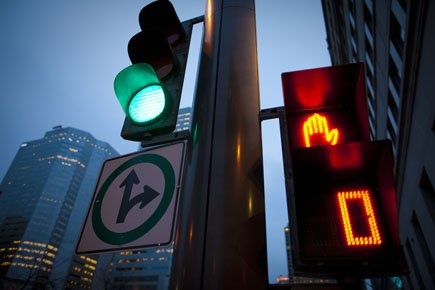This column has already discussed how to regulate traffic with the use of new technologies and certain innovative applications. Now, Google is going further with a new plan called Green Light.
By using artificial intelligence and collecting all the data through Google, this project has already made it possible to harmonize the coordination of traffic lights with the flow of traffic in certain cities.
In these places, we notice interesting progress that is well adapted to contemporary problems. With improved coordination, we actually note a reduction in the waiting time of motorists at red lights and, consequently, an appreciable reduction in CO emissions.2.
This improvement is not trivial.
You should know that more than anything, harmful emissions in large cities arise precisely from the high frequency of braking and acceleration by motorists who too often find themselves waiting, stuck in the middle of traffic.
At intersections surrounding traffic lights, it is even estimated that the level of pollution can be up to 30 times higher than that observed on a normal road.
Google is very confident about its plan. The company says today that with the collaboration of a large number of cities, they could strike a double blow by providing effective solutions both for the environment and for the drivers who find themselves on their territory . Not to mention a reduction in stress and even daily frustration for those behind the wheel. So many incentives to continue on this path.
A promising vision
Reduction of traffic jams, waiting at red lights and vehicle emissions in cities around the world, therefore. Could we even let ourselves imagine crossing an entire city without even having to stop?
Are we in the middle of a mirage here? Not according to Google. With its plan, the company gives a good idea of how cities could easily adjust their traffic lights and achieve new fluidity.
To date, Green Light is operational in 70 intersections in around ten cities around the world, including Rio de Janeiro, Brazil, Seattle, United States, Manchester, England, Hamburg, Germany, in Jakarta, Indonesia, and Abu Dhabi, on the United Arab Emirates side, to name just a few places.
Implementation of the plan there is limited at the moment, but Google has indicated that several of these participating metropolises are enthusiastic and encouraging other urban planners to join them.
Enthusiasm also comes from the fact that we act here with a simplicity that is welcome.
Using Google Maps and artificial intelligence to study traffic patterns and driving trends, specialists simply provide actionable recommendations for cities to optimize their traffic light plans.
Nothing is imposed. The traffic engineers of these cities are completely free, for their part, to make the decision to retain them or not.
However, the good thing is that if they decide to make the suggested changes, they will be able to do so at low cost, since the solutions adapt perfectly to the infrastructures they already have. Ultimately, they would even be able to solve their problems in less than five minutes, that’s saying something.
Already results
Based on the results obtained so far, it is estimated that the project has the capacity to reduce greenhouse gas emissions by 10% at intersections and could achieve a reduction of up to 30% at stops.
Fuel economy is also observed. It is reported that it could be equivalent to the gasoline used for around thirty million car journeys each month.
Even the police find their benefit there. Or so says Rupesh Kumar, joint commissioner of police of Calcutta, who mentions that Green Light has become a valuable resource for his traffic police. We understand why.
Everything indicates that in terms of this technology, there will be a before and an after.
Before Green Light, Google says planners had to use manual vehicle counting, which required either high labor costs or expensive sensors.
Today, the company is confident that by working with cities around the world, its green plan can help both drivers and the planet. The impact is considered significant, and even more so in cities with limited access to advanced technologies. No wonder we want to extend the project to a growing number of cities in 2024. This is a trend that we will have to follow over the next year.
